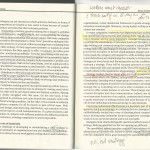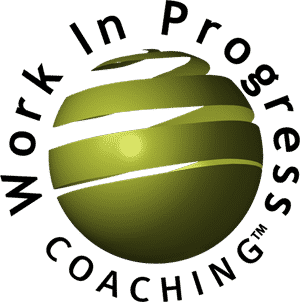 It’s Fall. School’s back in session. I’m taking an online class in strategic planning. Ordered my used books from half.com and downloaded my ebooks. (I’ll see if I can resist printing them.)
It’s Fall. School’s back in session. I’m taking an online class in strategic planning. Ordered my used books from half.com and downloaded my ebooks. (I’ll see if I can resist printing them.)
With pencil and highlighter in hand, I opened HBReview’s “On Strategy” to read my first assignment. When I got to page 5, yellow highlighting appeared! Humm … could be good or could be bad. Good if the highlighting matches what I would emphasize, bad if it doesn’t.
On page 6, red underlining appears – exactly what my pen would have traced! 
Hey, maybe, just maybe, I can save time and read just the highlights and underlining. On page 7, yellow highlighting turns to pink. Uh-oh, no marks at all and I’m at page 27. Hopeful, I thumb through the rest of the book to find my path to easy learning. Underlining begins again at 32, back to yellow on 95, back to pink on 185. Then the trail turned colorless and cold all the way to the end, page 248.
Can’t cheat and learn
Truth be told, I knew around page 10 that my search for a shortcut to learning was a futile effort based on a counter-productive plan. Even if each and every page was liberally sprinkled with emphatic hieroglyphs, I knew I would still need to read each and every word. Why? Because I took the course to broaden my thinking, challenge what I do know and learn what I don’t, not to merely pass a test.
Learning is a developmental process that requires each individual to experiment with new ideas, go beyond their current knowledge and unlearn what’s no longer applicable or useful. If I only paid attention to what someone else highlighted, I would not be learning about my current knowledge edge. Like I said, a futile effort. Not the point of being an effective LEARNer.
Not the point of being an effective LEADer, either. Being a better leader, so named by your employees and validated by your bottom line, means knowing who’s on your team by much more than their resume or functional title.
Take a class in your people
First, fill in this table:
| Name | What naturally motivates them? (hint: it’s not $$) | What you count on them for? (hint: it’s not “work hard”) | What’s stressing them? (hint: it matters) | What I need to do to better support them. (hint: you may need to change first) |
| Person A | ||||
| Person B |
Second, have a conversation. Set the context of broadening our understanding and appreciation of each other. Share your current understanding. Ask them if you’re accurate or what they would change. Listen to each and every word. Don’t presume that you know what they mean just because you understand the English. Ask them, “Tell me more.”
Third, take action on what you learned.
Followers teach
We learn from others. The others who can teach us the most about being an effective leader are those we lead.
Learning who your people are – what lights them up, what burns them out, what challenges they are seeking to overcome, what future they are living into – is your job.
Being this kind of leader goes beyond reading every word and underlining the phrases in a resume. It’s a matter of being in the process every day, learning – and highlighting – who they are. I can’t underline that enough.
Subscribe
Get Camille's latest posts!
